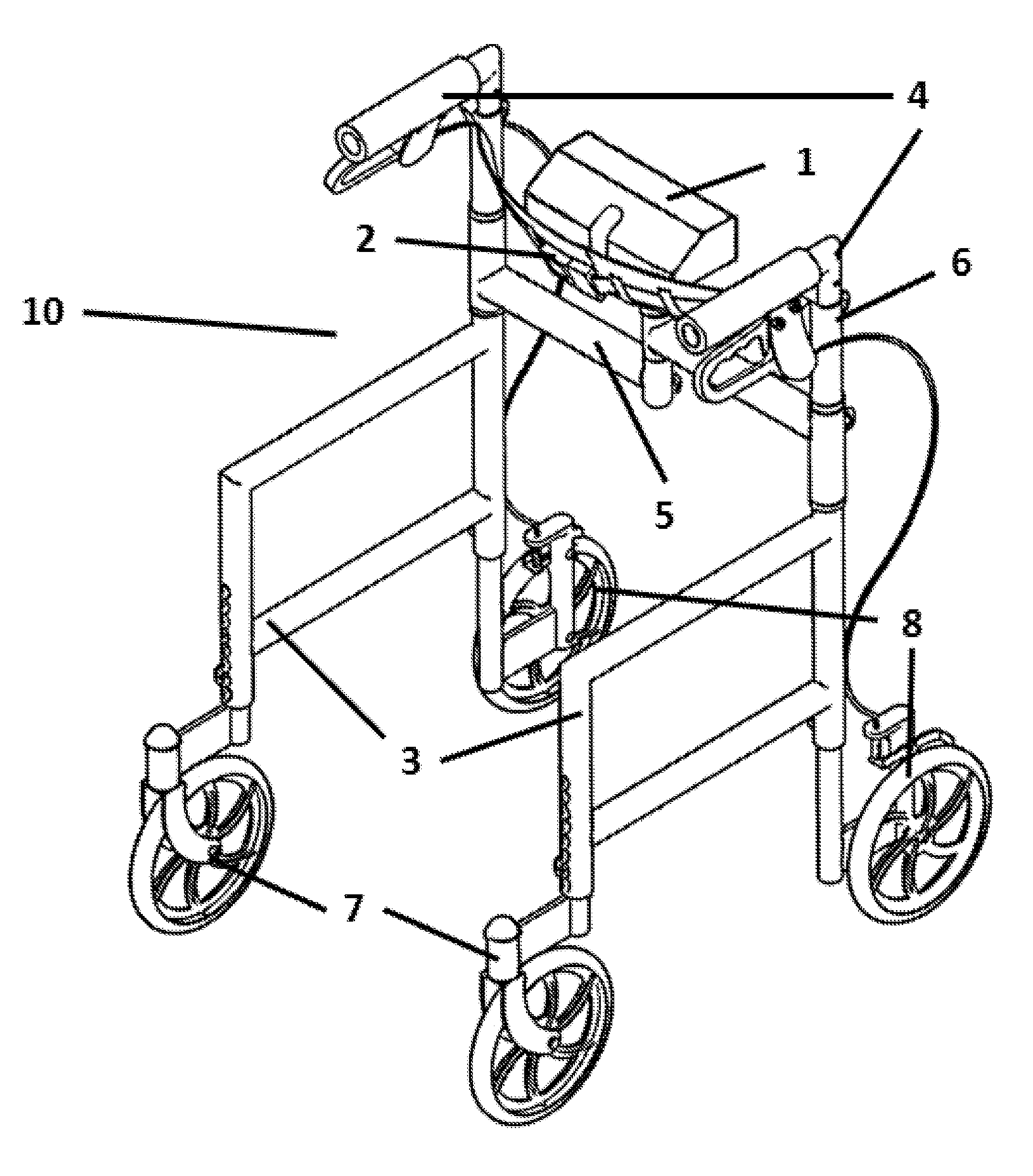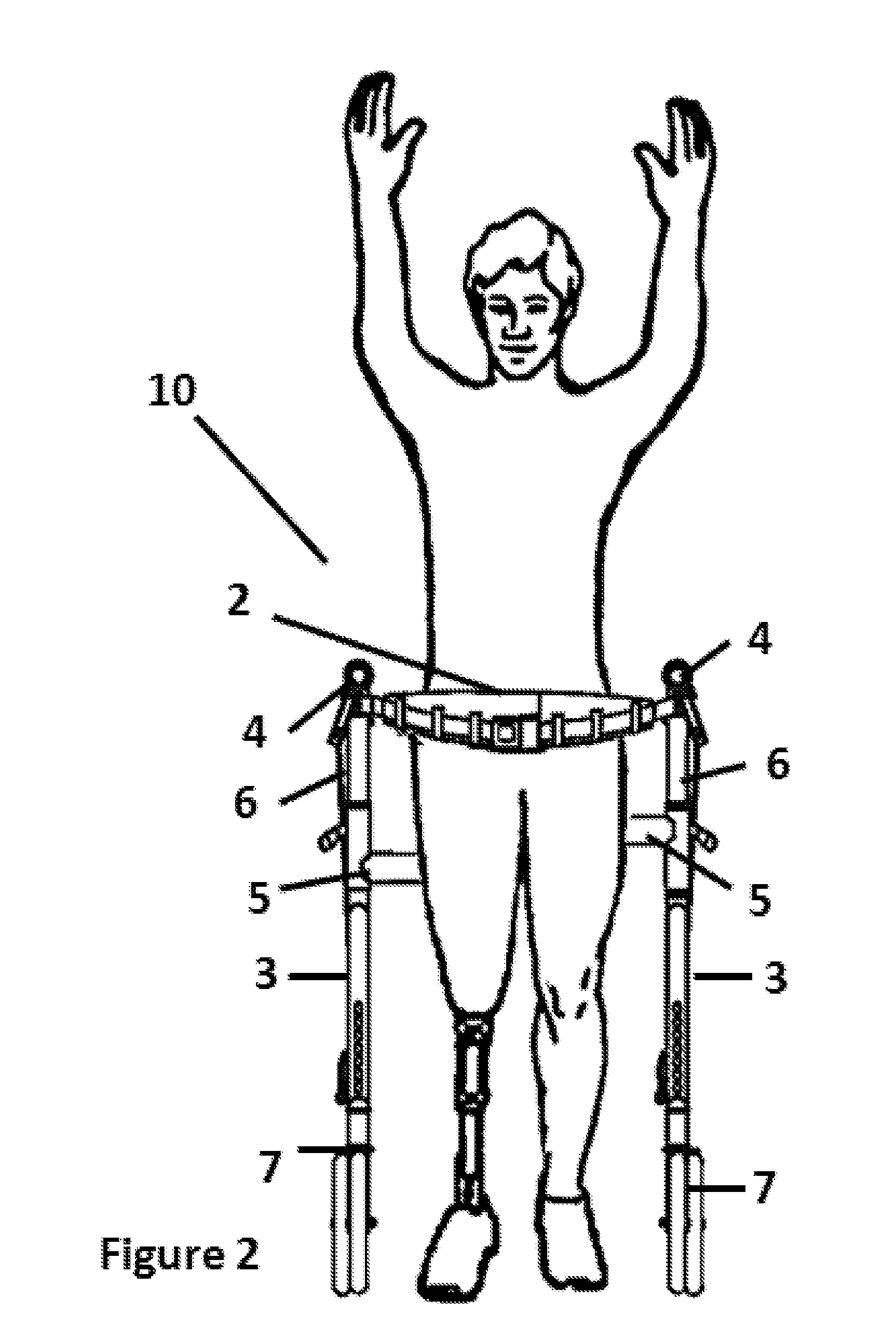Mobility Assistance Device
a technology of mobility assistance and assist device, which is applied in the direction of folding cycle, multi-axis wheelchair, wheelchair/perambulator, etc., can solve the problems of individual's arms not being free to use for other purposes, affecting the basic body functions of digestive, cardio-vascular and respiratory systems, and affecting the individual's health
- Summary
- Abstract
- Description
- Claims
- Application Information
AI Technical Summary
Benefits of technology
Problems solved by technology
Method used
Image
Examples
Embodiment Construction
[0115]Referring to the drawings, an illustrative embodiment of a mobility assistance device is generally indicated by reference numeral 10. Also shown in FIG. 1 are the primary structural components of device 10. These include two side frames 3, two handles 4, a hinge arm mechanism 5, and 2 hinge posts 6. The belt 2 is rigidly attached to handles 4, which connects through the hinge posts 6, to side frames 3 while securing the hinge arm mechanism with seat support frame members 5.
[0116]In one embodiment, the device 10 includes a support frame having a pair of generally elongated, parallel, spaced-apart side frames 3. Front wheel assembly 7 is provided on the front of each frame 3. In some embodiments of the device 10, a cam lever rigidly fixes each wheel assembly 7, 8 to the corresponding side frame 3. In one embodiment, the height of the frame member 3 relative to the ground can be controlled by various mechanisms, including the spring buttons and hole features as shown in FIG. 1 or...
PUM
 Login to View More
Login to View More Abstract
Description
Claims
Application Information
 Login to View More
Login to View More - R&D
- Intellectual Property
- Life Sciences
- Materials
- Tech Scout
- Unparalleled Data Quality
- Higher Quality Content
- 60% Fewer Hallucinations
Browse by: Latest US Patents, China's latest patents, Technical Efficacy Thesaurus, Application Domain, Technology Topic, Popular Technical Reports.
© 2025 PatSnap. All rights reserved.Legal|Privacy policy|Modern Slavery Act Transparency Statement|Sitemap|About US| Contact US: help@patsnap.com



